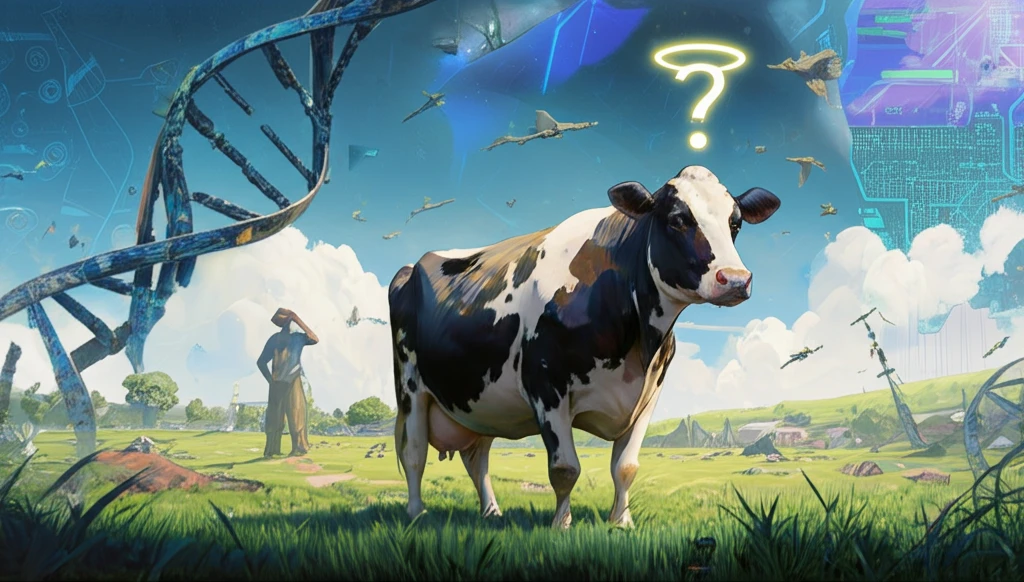
Is Your Dairy Cow a Repeat Offender? Understanding and Tackling Repeat Breeding
"Frustrated with cows that just won't conceive? Learn the common causes of repeat breeding in dairy cows and what you can do about it to improve your herd's fertility."
For dairy farmers, a cow that consistently fails to conceive – known as repeat breeding (RB) – is more than just an inconvenience. It’s a significant drain on resources, impacting milk production, increasing costs, and ultimately affecting the profitability of the entire operation. Imagine the frustration: repeated artificial insemination (AI), veterinary check-ups, and special feed, all without the desired result – a healthy pregnancy.
Bangladesh, with its reliance on dairy farming, faces its own unique set of challenges when it comes to repeat breeding. In the Baghabari milk shed area, a crucial milk-producing region, farmers grapple with this issue regularly. While crossbred dairy cattle are vital to the country's milk supply, repeat breeding poses a major obstacle to increasing production and achieving national goals for the dairy sector.
But what exactly causes repeat breeding, and what can farmers do to address it? A recent study conducted in the Baghabari region sheds light on the potential factors behind this persistent problem. By understanding the root causes, farmers can implement targeted strategies to improve conception rates, reduce economic losses, and ensure the long-term health and productivity of their herds.
Unlocking the Mystery: What Causes Repeat Breeding in Dairy Cows?

Repeat breeding isn't usually caused by one single factor. Instead, it's often a complex interplay of several issues that affect a cow's ability to conceive. The study in Baghabari identified several key culprits, highlighting the importance of a holistic approach to addressing the problem.
- Nutritional Deficiencies: The study revealed that a lack of balanced feed was the biggest concern, with 60% of farmers citing it as a major cause of repeat breeding. This means cows weren't getting the right mix of nutrients, vitamins, and minerals needed for optimal reproductive health. Availability of quality concentrate feed ingredients and year-round green grasses plays a vital role in ensuring balanced nutrition.
- Semen Quality: Inadequate semen quality of frozen semen samples was identified as the second major concern for repeat breeding. Using high quality semen during AI is a must have step to ensure fertilization of eggs.
- Reproductive Diseases: Infections and other reproductive health issues can significantly hinder a cow's ability to conceive and maintain a pregnancy.
- Unskilled AI Workers: Improper technique during artificial insemination can reduce the chances of successful fertilization.
- Cow Genotype: Certain crossbreeds were more prone to repeat breeding than others. Local×Holstein Friesian crosses had the highest incidence of RB, while Local Sahiwal crosses had the lowest.
- Other Factors: The study also pointed to other contributing factors such as mistreatment of cows, high milk production demands, delayed artificial insemination after heat detection, seasonal variations, and general health issues.
Turning the Tide: Practical Steps to Improve Conception Rates
While repeat breeding can be a complex problem, it's not insurmountable. By focusing on the key factors identified in the study, farmers can take proactive steps to improve their herd's reproductive health. This includes ensuring balanced nutrition, using high-quality semen, implementing proper AI techniques, maintaining a clean and stress-free environment, and promptly addressing any health issues. Consulting with a veterinarian is also crucial to identify and treat reproductive diseases or anatomical defects. With careful management and attention to detail, dairy farmers can overcome the challenges of repeat breeding and achieve a more productive and profitable herd.
